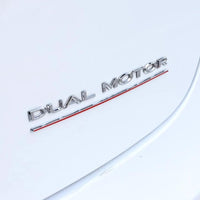Does Tinting Your Tesla Make Sense? FAQs About Tinting and US Regulations Regarding It.
The benefits of owning a Tesla include cutting-edge technology, outstanding performance, and an eye-catching, elegant style. However, a common question among Tesla owners is whether window tinting is necessary for their cars. To assist you in making an informed choice, we'll go over the advantages of tinting your Tesla, answer commonly asked questions, and explain the laws governing tinting in the majority of US states in this blog article.

Understanding Window Tint Options for Your Tesla
When considering auto window tinting for your Tesla, it's essential to choose the right type of tint film to maximize benefits such as protection from harmful UV rays and solar heat. For your Tesla Model 3 or other Tesla models, options like ceramic window film and metalized window film offer varying levels of heat rejection and UV protection. Ceramic tint, in particular, is known for its superior performance in reducing solar heat while maintaining high clarity.
Whether you’re looking to tint the rear windshield, windows, or even the glass roof, it's crucial to select a tint that not only enhances your vehicle's aesthetics but also complies with local regulations. Ensure your rear glass, side windows, and roof tinted areas are professionally installed to achieve optimal results and adhere to legal standards for Tesla window tinting.
Why Would You Want to Tint Your Tesla?

- Increased Privacy: By lowering light penetration into the cabin, window tinting your Tesla can increase privacy. This is especially helpful if you wish to keep your profile low-key or if you regularly leave valuables in your car.
- UV Protection: Window tinting helps shield you and the interior of your car from the sun's damaging UV rays. This can stop the dashboard and upholstery of your Tesla from fading and deteriorating.
- Temperature Control: Tinted windows can cut down on heat intake, which will cool down your Tesla's interior and ease the strain on your air conditioning system. This can improve general energy efficiency in addition to improving comfort.
- Glare Reduction: Tinting makes driving more comfortable and safe by reducing glare from the sun and other cars' headlights, especially in the bright daytime or at night.
Frequently Asked Questions Regarding Tinting

1. Is it permissible to tint windows?
Yes, however, each state has its own laws about this. Regarding the amount of tint that can be put on a car's various windows, each state has its own laws. To guarantee compliance, it is imperative to verify the local rules prior to getting your Tesla colored.
2. How deeply may my windows be tinted?
Visible Light Transmission (VLT) percentage is used to calculate the darkness of a window tint. State-by-state variations exist in the legal limit for VLT for windshields, rear windows, and front windows. For example, whilst some states allow front-side windows to have a maximum VLT of 70%, others might only allow 35% VLT.
3. Can the front windshield be tinted?
There are typically limitations on the amount of tint that can be applied to the front windshield, but this is the case in many states. For example, a state may approve more extensive tinting, but some may only allow a small strip at the top of the windshield
4. What is the duration of tinting?
Premium window tinting films have an extended lifespan of up to ten years. A number of variables affect how long the film lasts, including installation, exposure to the elements, and film quality.
5. Can I do my own tinting?
Although kits for do-it-yourself projects are available, expert installation is advised. An expert makes sure the tint is applied correctly, following local laws, and without bubbles or flaws.
State-specific Tinting Regulation
This is a brief overview of state-by-state window tinting laws in the United States. Keep in mind that these rules are subject to change, so before making any changes, always confirm with the relevant municipal authorities.
California
70% of the windows on the front side are VLT. No limitations
Back Window: Unrestricted
Front windshield: from the top, up to 4 inches
New York:
70% VLT for front side windows,
70% VLT for rear side windows,
70% VLT for the back window, and up to 6 inches from the top for the front windshield
Florida
28% VLT for front-side windows
Windows on the back side: No limitations
Back Window: Unrestricted
Front windshield: from the top to a maximum of 6 inches
Texas
25% VLT for front-side windows
Windows on the back side: No limitations
Back Window: Unrestricted
Front windshield: from the top to a maximum of 5 inches
Illinois
35% VLT for front-side windows
Windows on the back side: No limitations
Back Window: Unrestricted
Front windshield: from the top to a maximum of 6 inches
Arizona
33% VLT for front-side windows
Windows on the back side: No limitations
Back Window: Unrestricted
Front windshield: from the top, up to 4 inches
In summary
Tinting your Tesla can have a lot of advantages, including improved temperature control, decreased glare, and increased privacy and UV protection. To avoid penalties or legal problems, you must be informed of and abide by your state's window tinting laws.

The sleek design of your Tesla can be enhanced with roof glass and Tesla window tint, making sure all windows are tinted to perfection for both style and function. Prior to tinting, research the legal requirements in your state, weigh the advantages and aesthetics, and select a reliable installer. You can improve the comfort and style of your Tesla while adhering to the law by using the appropriate tint.
 :
:  :
: 









